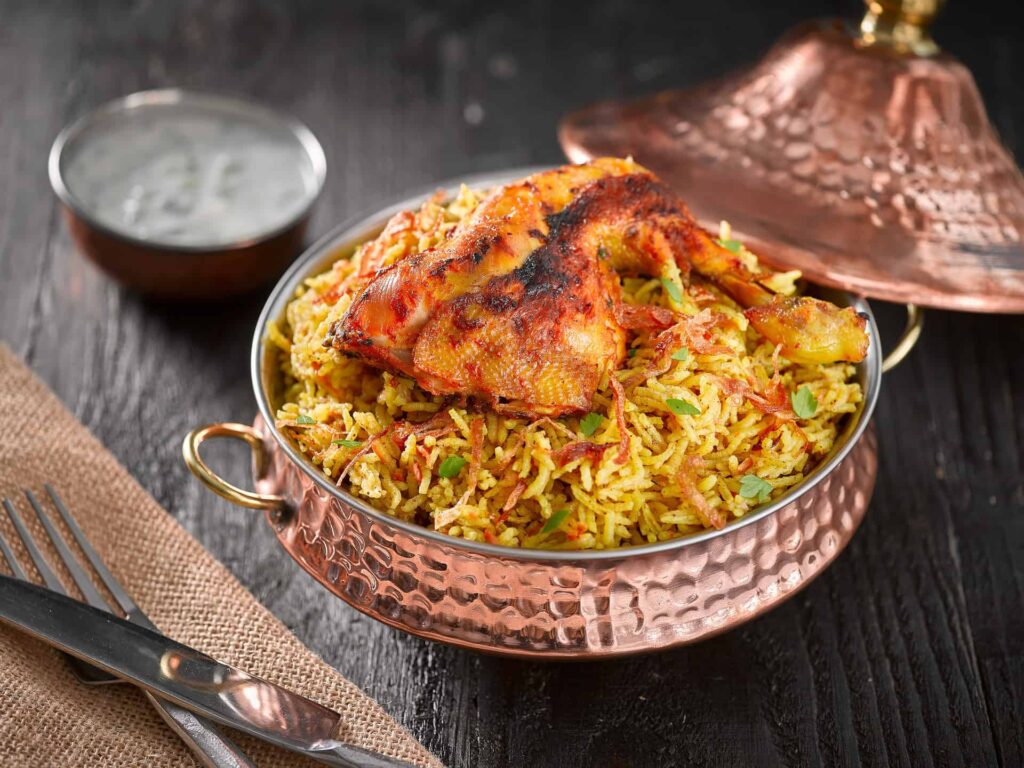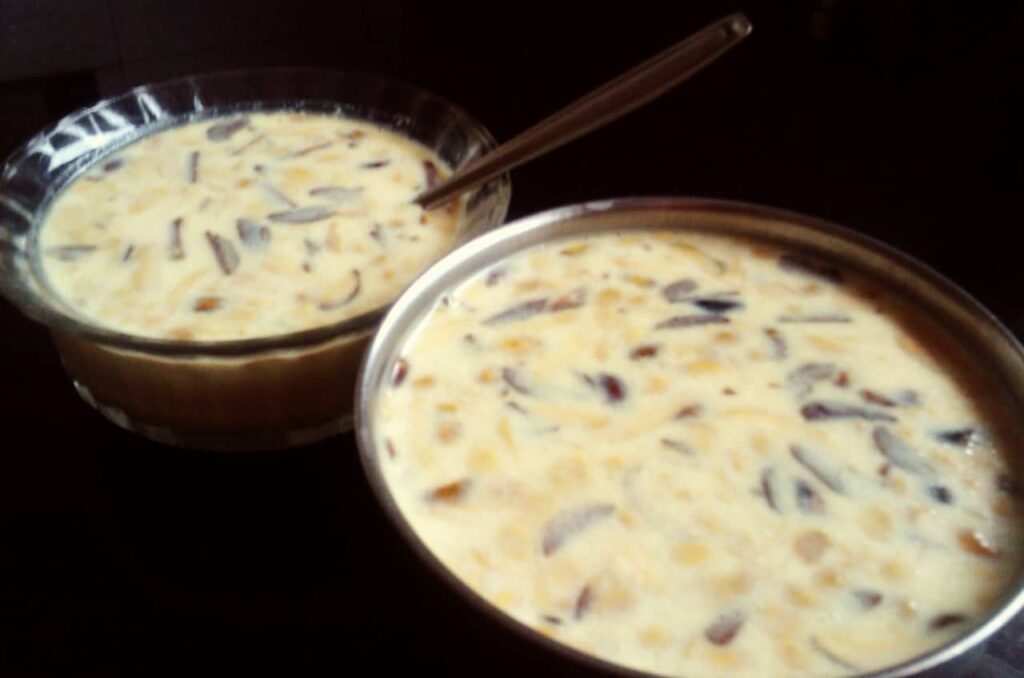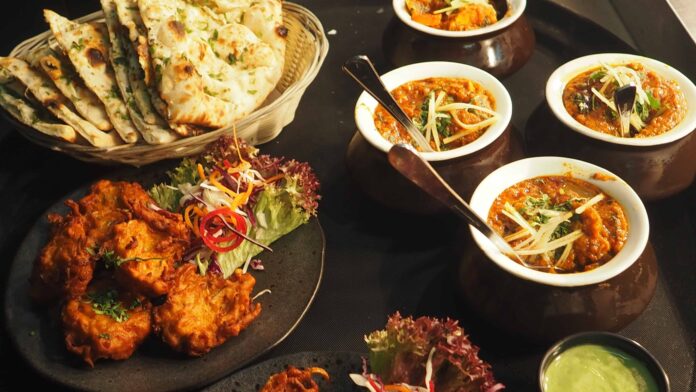Pakistani Traditional food is well-known around the globe for its rich and mouth-watering foods. It has only been possible due to its rich and special herbs. It is considered the land of nature, adventures, and food—people around the globe love to visit Pakistan for its cultural foods. Pakistani cuisines are rich in tastes and aromatic. Each recipe of traditional foods is engraved in its provinces, the geography ranging from the highest peaks to the deserts, each creates its own divine and unique taste to its foods that attract its tourists. Their traditional Pakistani food comes from the time spent with Indians; they were not allowed to eat pigs or drink alcohol. Therefore, they set their eyes on beef, poultry, fish, and vegetables. Around 1526, the Mughal Empire (from India) established its rule in modern-day Pakistan. Herbs and spices and almonds and raisins are common components in its Mughal culinary style. Mughal cookery is still popular in Pakistani cuisine. The basis of Pakistani cuisine includes lentils, milk, seasonal sabzi, flour, and wheat products. Vegetable like potatoes, okra, peas or chickpeas is eaten according to the season. Summing the list of best foods is no easy task for a food lover as each food consists of a savory and delicious taste. Following are some of the traditional Pakistani food that is well-known by many:
Chicken Karahi

One of the most popular dishes among Pakistan as well as the tourists. The words referred to the wok, container where it’s prepared (which is black, iron, and scoop-shaped) and served right off the stove. This dish originates in Khyber Pakhtunkhwa. For Karahi, the meat of cow or goat, or chicken is used. It’s called mutton Karahi when prepared with mutton. General addition to meat includes different vegetables like tomatoes and chilies, and it varies as you travel further south. The recipe of chicken Karahi differs in the region, but the recipe includes the meat, onion, tomatoes, coriander, red pepper, green chilies, ginger, and garlic. In Islamabad, meat is cooked with vegetables and served in a wok in which cooked.
Biryani

A food loved by Pakistani is considered to be the crown jewel of Pakistani food. No dining experience seems complete without it. It is a mixture of yellow-colored rice and meat, either chicken or beef. Rice gets its color and taste from the different mixtures of spices and herbs. Its preparation also varies from different cities, but generally, it’s prepared when meat and rice are steamed together. You would also found it as a popular dish in India and Bangladesh. A different version of biryani includes Sindhi biryani, Bombay biryani, Chicken Tikka Biryani, Mutton biryani, and Aalo biryani, no matter the variant; it’s a food loved by everyone.
Haleem

One of the satisfying meal that won’t regret eating it again and again. It originates from a middle eastern dish called Hareesa. It is a mixture of different staples in Pakistani food such as wheat, beef, mutton, chicken, etc. This dish takes a long time to prepare as different staples need times to combine to give a rich and aromatic taste. It’s served with fried onions, chilies, or sliced ginger and lemon squeeze for a more delighted taste.
Kheer

Onto some sweet dishes, we have kheer, a famous Pakistani traditional food. You would mostly be served with kheer in Eid. It’s basically a rice pudding composed of rice, sugar and milk. Some garnished it with nuts like almonds, pistachio, saffron and cardamom, that melts your mouth with every bite.
Nashta

Every area has its special breakfast items in Pakistan but some items are eaten throughout the country. And though what breakfast you chose is a personal choice. Some items are liked more than others in certain regions. The average breakfast comprises of eggs, paratha, sheermal with a tea or lassi, Halwa Puri with Chaney, Siri Paye, and qeema (minced meat). Bakar-Khani and rusks are also used in breakfast.
Siri Paya

Siri Paya is the traditional Pakistani food, and this Pakistani cuisine is mostly prepared on Eid ul Adha. People like to enjoy its gorgeous taste in the winter season because it gives more joy in that weather. Siri Paya is typically included in the breakfast meal. In the Urdu language, Siri and Paya refer to a stew made with the head and feet of an animal such as a goat, cow, or lamb. This Pakistani cultural food recipe starts with animal head and feet first fried with onions, masala powder (blend of spices), covered with water, and simmered until the is fully cooked. Stew is mostly topped with green chilis, leaves of coriander, and ginger. Served with naan or roti.
Daal Chawal
consists of lentils and rice, full of protein and fiber. We can cook this by using two types of lentils, in Urdu moong (yellow lentils) and masoor (red lentils). Lentils are combined with basmati rice creating a vegetarian dish. If you move from Murree Road to Fawara chowk, you find many food outlets offering chicken, Dahi Bhalla, and many other foods, but the shop crowded is Daal Chawal.
Sheer Khurma

Sheer Khurma is also a Pakistani traditional food that is mostly prepared on Eid ul Fitr and is quite popular in all Muslim countries. It is made with vermicelli cooked with milk and dates and some other dry fruits adding aroma to the dish. It is a dessert, which is usually served after the main course at different restaurants all over the country.
Seeji or Saji
Seeji r Saji is the Baluchi cruison food type which is now very famous all over the country. Chicken is firstly cleaned and then some masala’s are used to cover it completely and then it is cooked on coals which smells very good and it’s a kind of roasted chicken.
Lassi

Lassi is the Pakistani traditional drink mostly used in summers as it gives a feel or refreshment and also it removes all the thirst and fulfills the water need in our body. Pakistani’s usually drink in two flavors one is salty and the other in sweet taste. It is made by adding some water to yogurt and then mixing it in a mixture to get too thin as water, and then people add some salt or sugar as they like to drink it.
Nihari

Nihari was first made in Delhi in India. When people migrate from India towards Pakistan, this dish demand in Pakistan. Nihari is the famous traditional Pakistani food and is famous for its spiciness and taste. This Pakistani cuisine takes a whole night to cook and gets ready to eat in the early morning. Dry species frying in animal fat or vegetable oil. Some use Desi Ghee to cook. Desi Ghee is homemade local clarified butter. The taste of Nihari increases when the slow cooking stew is stirred.
Saag
People of Punjab commonly use saag as a Pakistani cultural food. Saag means “mustard greens.” The demand for saag is all over Pakistan. This traditional Pakistani food recipe is typically cooked with many ingredients. The word Tarka in the Urdu language makes it spicier and gorgeous in taste. It is mostly prepared in winters.
